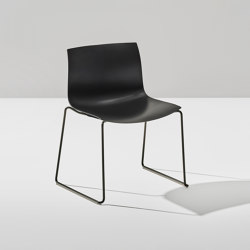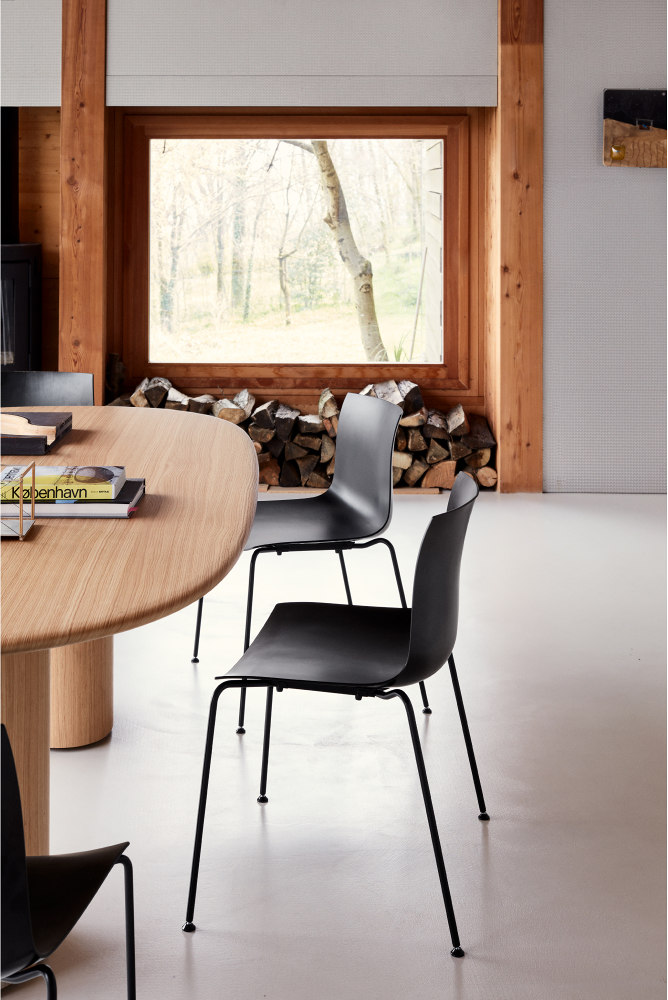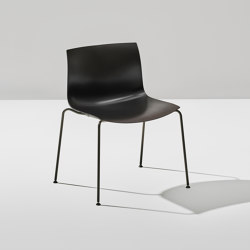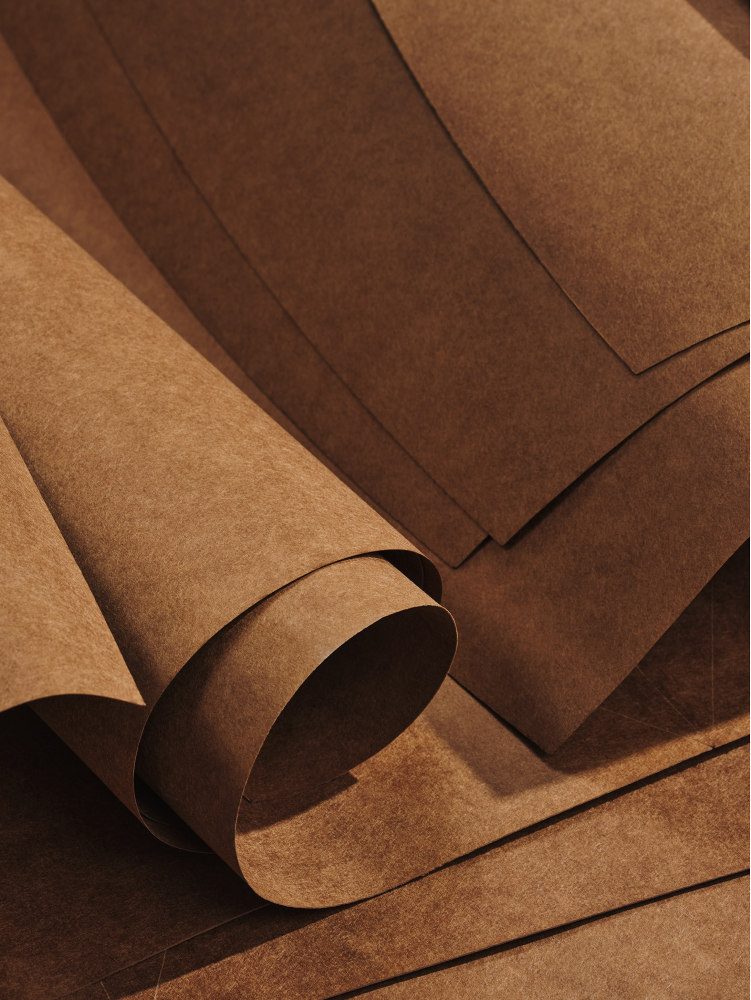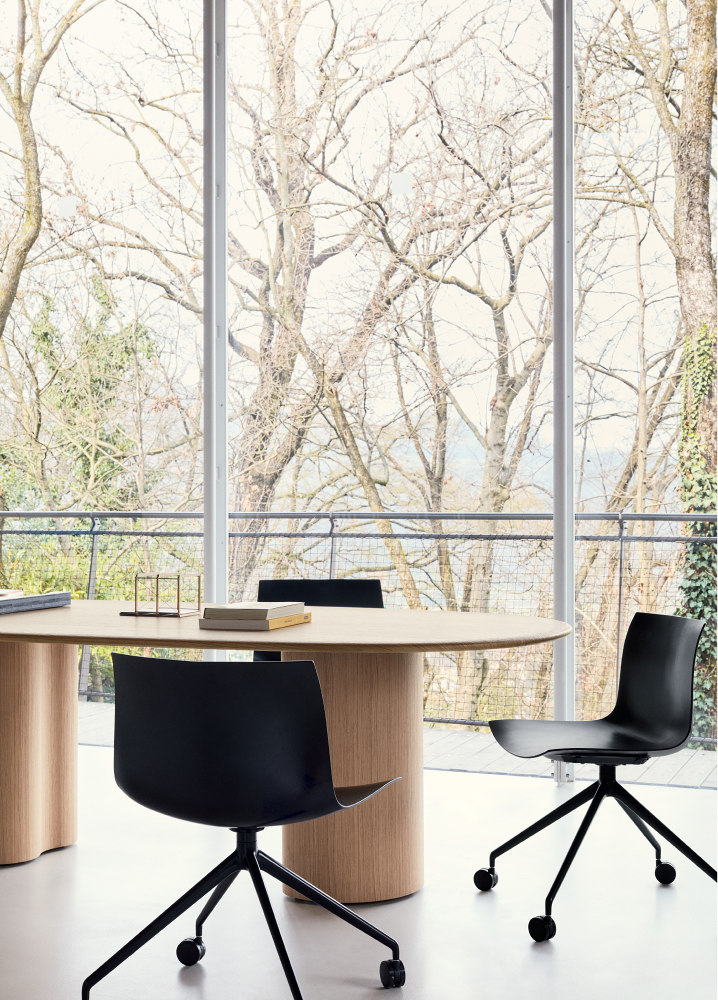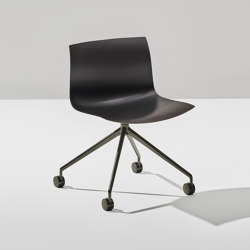A new era of sustainable seating: Arper unveils Catifa Carta
Brand story by Harriet Thorpe
Monastier di Treviso, Italy
09.05.24
Fully circular and made with pioneering materials, Catifa Carta is more than just a chair. It stands as a testament to Arper’s dedication to environmental responsibility, proving that creativity and sustainability can indeed coexist.
Catifa Carta is a fully circular reinterpretation of the classic Catifa 53 chair. At the end of its life, its bi-curved shell can be converted into a biochair, a high-carbon resource for enriching soil with mycelium and microbes. Photo: Salva Lopez
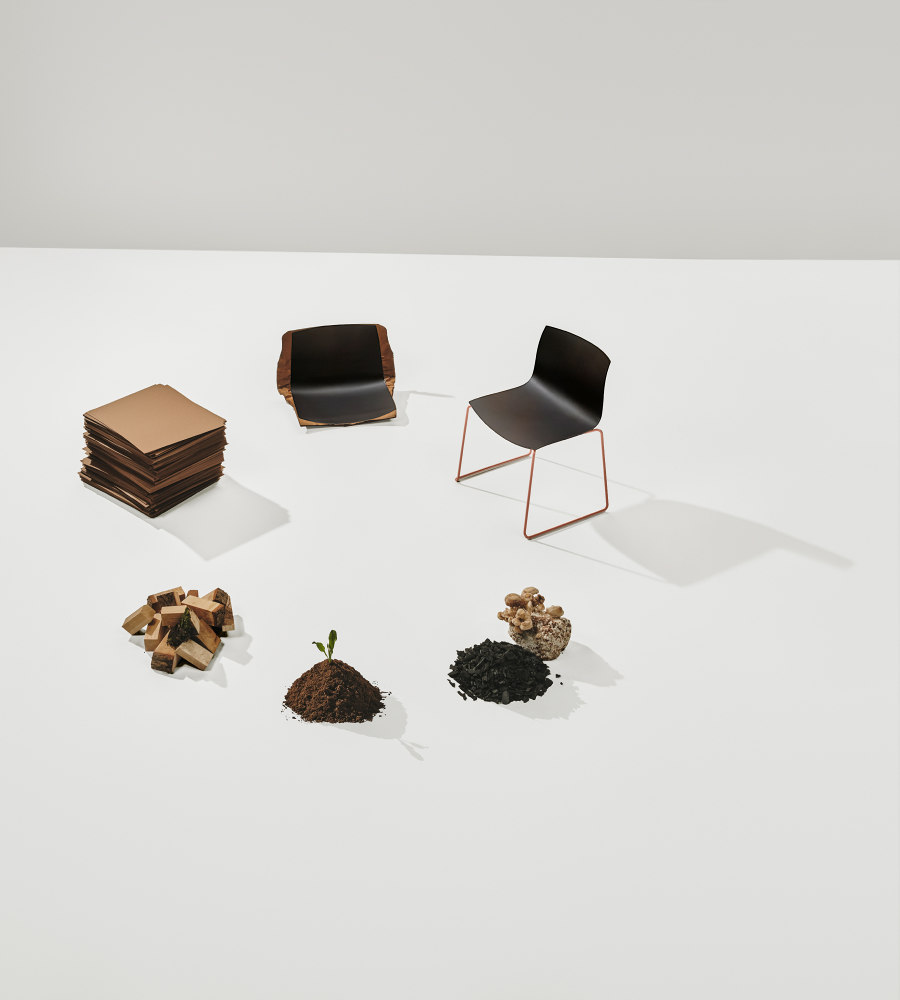
Catifa Carta is a fully circular reinterpretation of the classic Catifa 53 chair. At the end of its life, its bi-curved shell can be converted into a biochair, a high-carbon resource for enriching soil with mycelium and microbes. Photo: Salva Lopez
×When it comes to crafting an interior, every environmentally conscious decision makes a difference. If each product specified takes a progressive sustainable approach, incrementally, change can take a firmer root – across commercial networks, in material science laboratories and in the soil of our earth that feeds us. What’s exciting is that in 2024, making those decisions does not mean compromising on good – and even iconic – design. There’s a cohort of trailblazing brands disrupting the status quo with product updates, innovations and material swaps that respond to the circular thinking necessary to today’s climate crisis.
Arper’s new Catifa Carta Chair is a fine example of this. It’s a reinterpretation of the iconic Catifa 53 chair and its seat is made of PaperShell, a composite wood by-product that sequesters carbon in its creation. Just as strong, durable and elegant as its predecessor (yet without the carbon footprint), the new material comprises a layering of 29 sheets of paper, bonded with a natural resin binder. At end of life, instead of contributing to landfill, Catifa Carta can be disassembled and its quintessential bi-curved shell can be converted into biochar, a high-carbon resource for enriching soil with mycelium and microbes.
Arper was not afraid to experiment with pioneering materials: the new chair features a re-engineered shell made of PaperShell, a revolutionary material made of composite wood by-product. Photos: Alberto Sinigaglia (above), Salva Lopez (below)
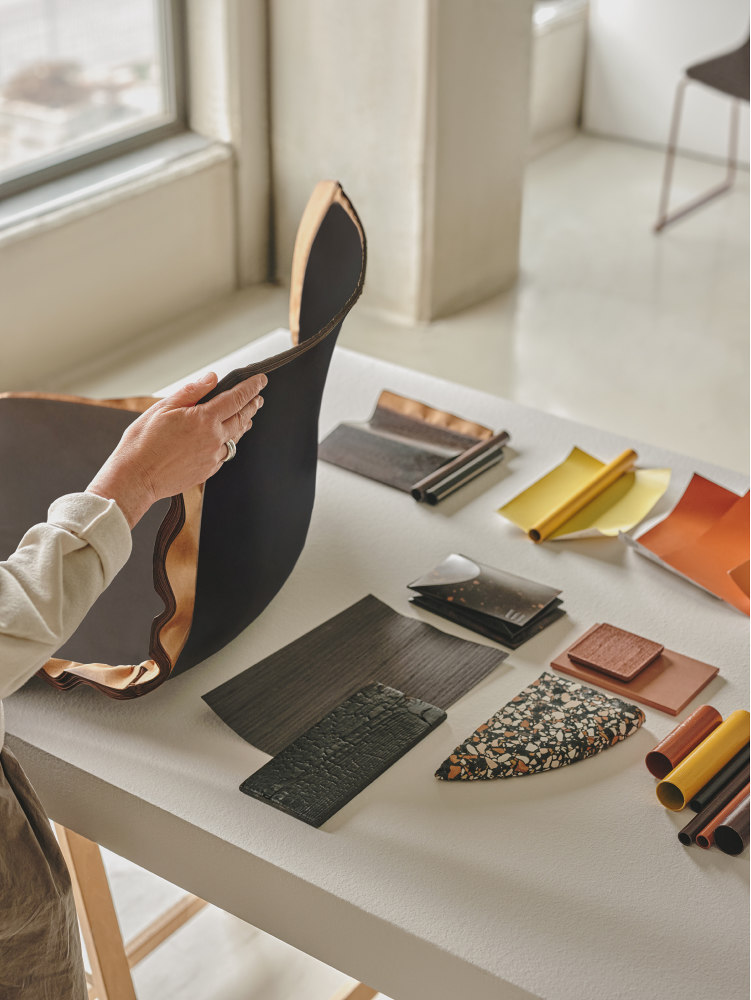
Arper was not afraid to experiment with pioneering materials: the new chair features a re-engineered shell made of PaperShell, a revolutionary material made of composite wood by-product. Photos: Alberto Sinigaglia (above), Salva Lopez (below)
×An icon evolves
This context is a coup for clients seeking both a versatile, coffee-coloured chair for a stylish workplace, commercial or residential project and a positive impact on the earth. It’s also a proud moment for renowned Italian design impresario Arper, for which the Catifa Carta Chair is another strategic bound forwards towards a better future, amplified by the brand’s global scale and vast network of influence. As a ‘collection extension’, it also follows in the footsteps of the Catifa 53 chair, originally designed by interdisciplinary studio Lievore Altherr Molina in 2001, which too made a significant bound as Arper’s first product with an environmental product declaration.
‘By embracing pioneering materials and conscientious practices, we aspire to inspire change and set the standard for responsible business in the industry’
Now nearly a quarter of a century later, Arper is the first design industry pioneer of PaperShell, marking the beginning of a new era of material innovation for the brand: ‘For us, collaborating with partners – such as PaperShell – to cultivate innovative developments is crucial for delivering impactful solutions and staying ahead in today’s ever-evolving landscape,’ says Roberto Monti, CEO of Arper. ‘By embracing pioneering materials and conscientious practices, we aspire to inspire change and set the standard for responsible business in the industry. This launch underscores our enduring commitment to leading by example, proving that responsible business practices can indeed be synonymous with cutting-edge creativity.’
Comprising 29 sheets of paper bonded with a natural resin binder, Catifa Carta significantly reduces the chair's environmental footprint by sequestering carbon dioxide. Photos: Salva Lopez
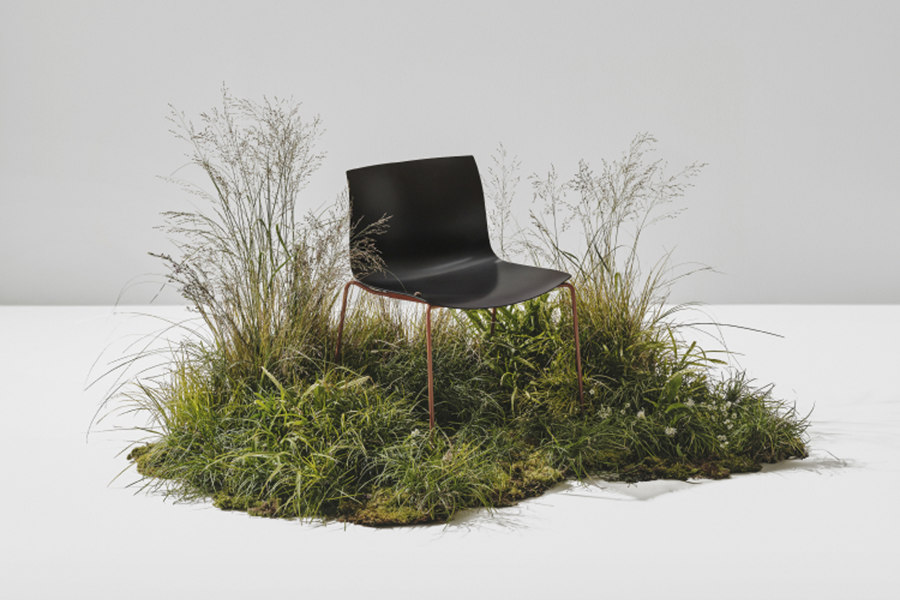
Comprising 29 sheets of paper bonded with a natural resin binder, Catifa Carta significantly reduces the chair's environmental footprint by sequestering carbon dioxide. Photos: Salva Lopez
×Function for people and planet
It’s this holistic approach that is propelling Arper towards further innovation projected for the rest of the century. Launched at the 62nd edition of Salone del Mobile, Catifa Carta was central to Arper’s presentation titled ‘What makes the project of living?’, which questioned how furniture can continue to respond and adapt to the accelerating demands of a world in flux, where strategies replace products with the goal of prioritising the planet alongside the needs of humans. Catifa Carta, for example, is designed upon circularity, a strategy that expands the ‘function’ of this iconic piece beyond human requirements, to also meet those of the earth.
Apart from bringing functionality and a sleek, elegant aesthetic to spaces, Arper’s innovative chair contributes to cleaner air, less landfill and healthier soil. Photos: Alberto Sinigaglia
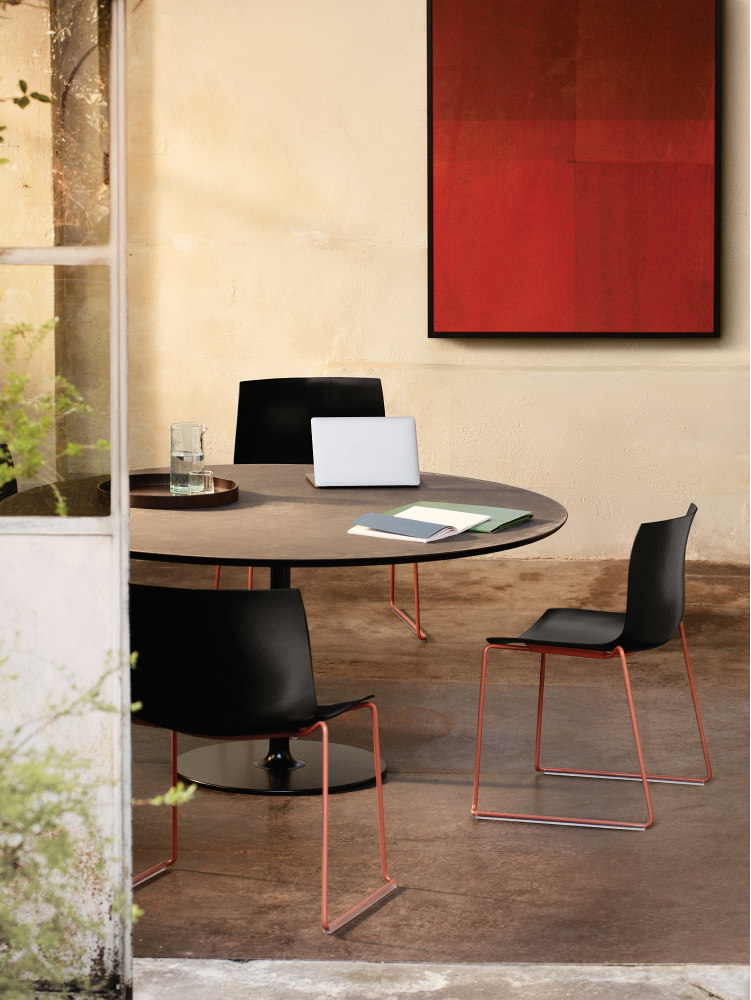
Apart from bringing functionality and a sleek, elegant aesthetic to spaces, Arper’s innovative chair contributes to cleaner air, less landfill and healthier soil. Photos: Alberto Sinigaglia
×This means that in addition to its solid stance, ample seat and aesthetic simplicity that provide the function required of a high-quality interior, Catifa Carta also contributes to cleaner air, less landfill and healthier soil. Arper wraps up this ‘symbiocentric’ human-nature relationship seamlessly within its design, proving that elegant and functional icons can synergistically coexist with environmental responsibility. If that’s where we are in 2024, who knows where and at what speed the rest of the century will take us and our earth.
© Architonic
Head to the Architonic Magazine for more insights on the latest products, trends and practices in architecture and design.


